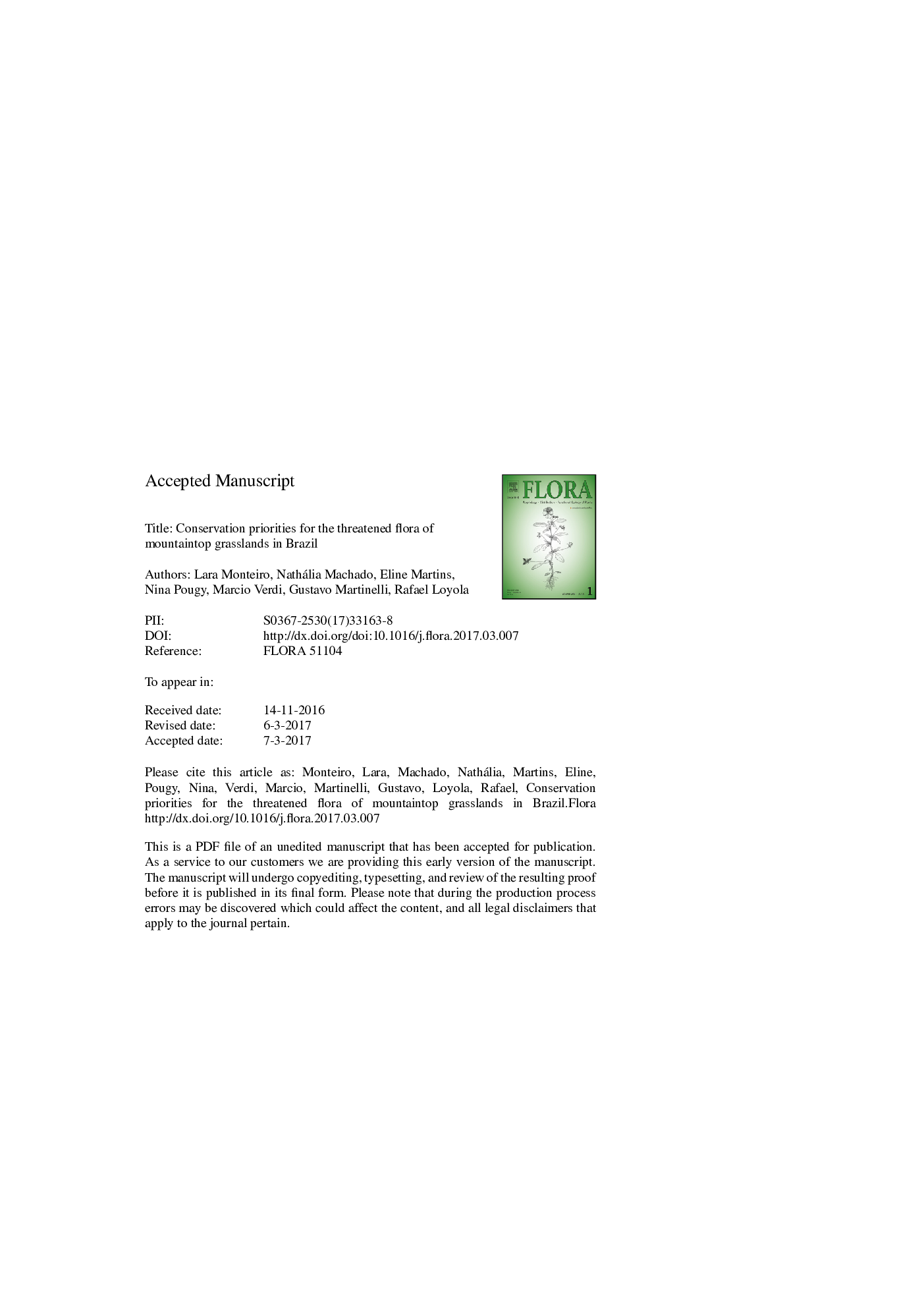| Article ID | Journal | Published Year | Pages | File Type |
|---|---|---|---|---|
| 8470242 | Flora - Morphology, Distribution, Functional Ecology of Plants | 2018 | 40 Pages |
Abstract
Mountaintop rupestrian grasslands or campos rupestres are unique ecosystems with high plant biodiversity. The southern Espinhaço mountains in Brazil are particularly important because they currently harbor 255 threatened plant species at risk of extinction owing to overspread farming, mining and uncontrolled fire in the region. Using the best available data on the distribution of these threatened species, distribution of farming and mining activities, and up-to-date data on fire frequency, here we developed a systematic conservation plan for all these species and pinpointed priority regions for taking different conservation actions. We found that it is possible to protect, on average, more than 25% of the threatened species ranges, avoiding sites with extensive use for farming and mining and favoring areas with intensive fire frequency while constraining the management to a relatively small area of only 17% of the region. The analysis accounts for what is already protected within protected areas in the region and is, therefore, complementary to the work already held by the actors and environmental organizations of the region. We offer maps of priority areas with their respective level of protection and suggest conservation actions at different levels of engagement to be implemented in the priority areas. These priority areas are part of a national species recovery plan for the region in Brazil and will likely support stakeholders and decision makers in its application in the forthcoming years.
Keywords
Related Topics
Life Sciences
Agricultural and Biological Sciences
Ecology, Evolution, Behavior and Systematics
Authors
Lara Monteiro, Nathália Machado, Eline Martins, Nina Pougy, Marcio Verdi, Gustavo Martinelli, Rafael Loyola,
